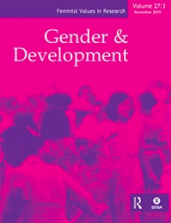The role of care and the local economy in women’s labour force participation: evidence from Mexico and Colombia in the pandemic era

Overview
Women face disproportionate care burdens on their time because of traditional gender roles, lack of public policies supporting them and the lack of government services for satisfying society's care needs. This unequal distribution of care responsibilities reduces their opportunities to fully participate in labour markets. We argue that all else equal, women's physical proximity to affordable care services is key to determining their accessibility to them. In addition, services may have different effects on women's labour force participation (LFP), depending on their care responsibilities and other characteristics of their social and economic local conditions, such as size and type of economic output. We use geospatial analysis to explore the relationship between the local supply of care services and women's LFP. We use the population census and the intercensal population survey of Mexico, together with data from economic censuses and directories of care and financial services. We also develop an exploratory data analysis model for the Colombian case. We find that, given gender roles in care provision and women's accessibility to economic sectors, the supply of care services and the type of local economies are quite significant in determining their LFP, regardless of their educational level. Accordingly, mere investment in care services may not be enough since the economic output and type of activities also interfere with LFP. Besides, this effect increased considerably during the COVID-19 pandemic.
Additional details
Publisher(s)
Editor(s)
DOI
10.1080/13552074.2022.2066816How to cite this resource
Citation styles vary so we recommend you check what is appropriate for your context. You may choose to cite Oxfam resources as follows:
Author(s)/Editor(s). (Year of publication). Title and sub-title. Place of publication: name of publisher. DOI (where available). URL
Our FAQs page has some examples of this approach.
Caregivers at the frontline of addressing the climate crisis



